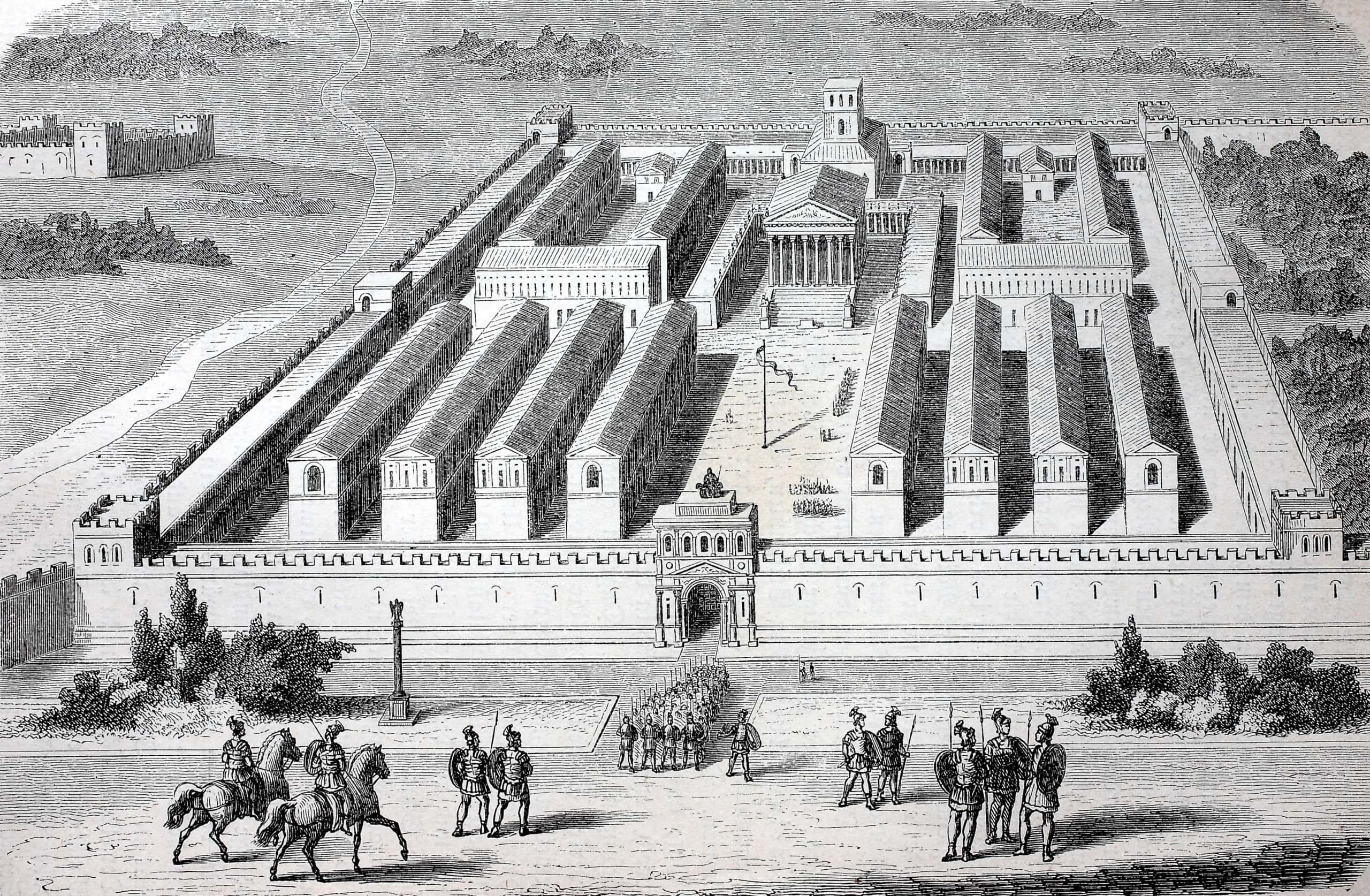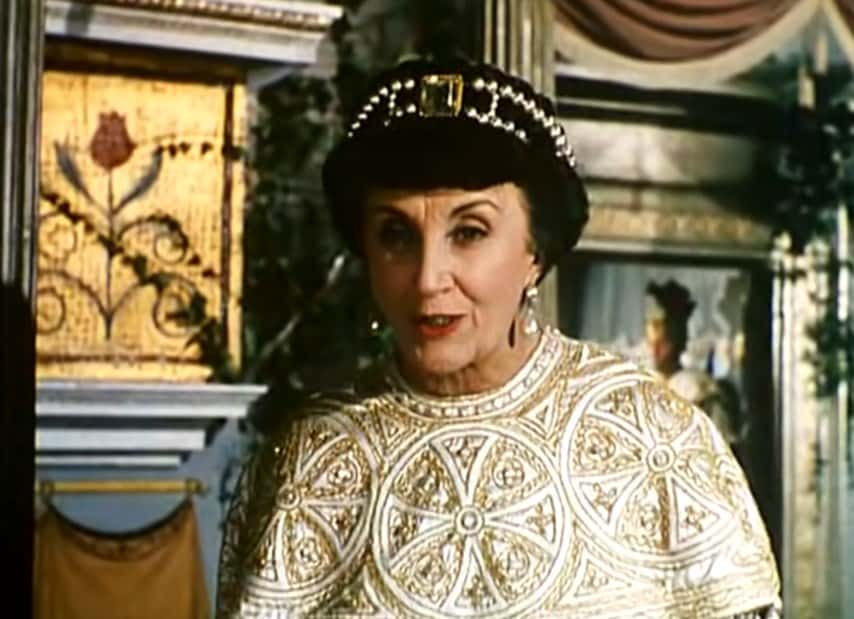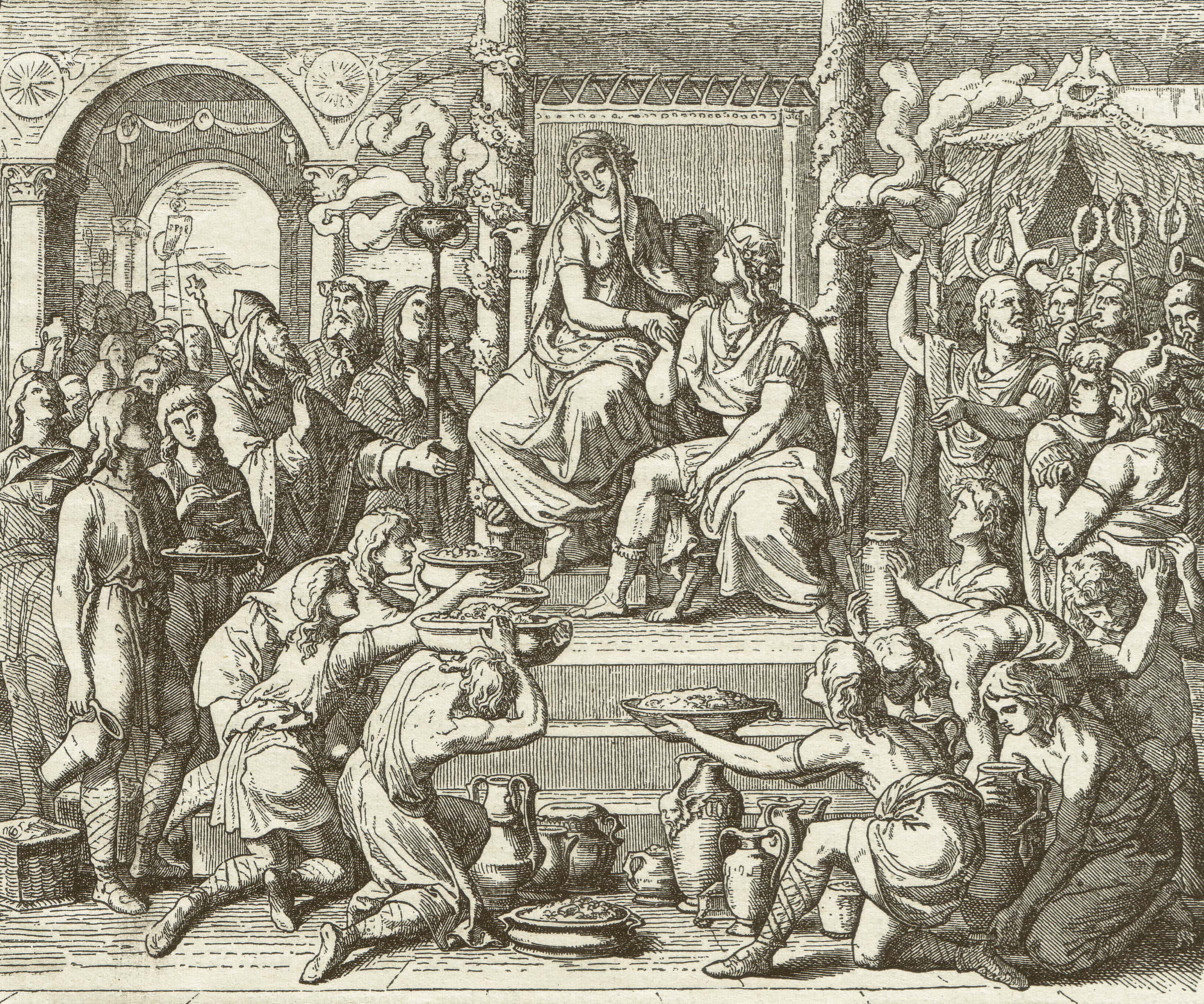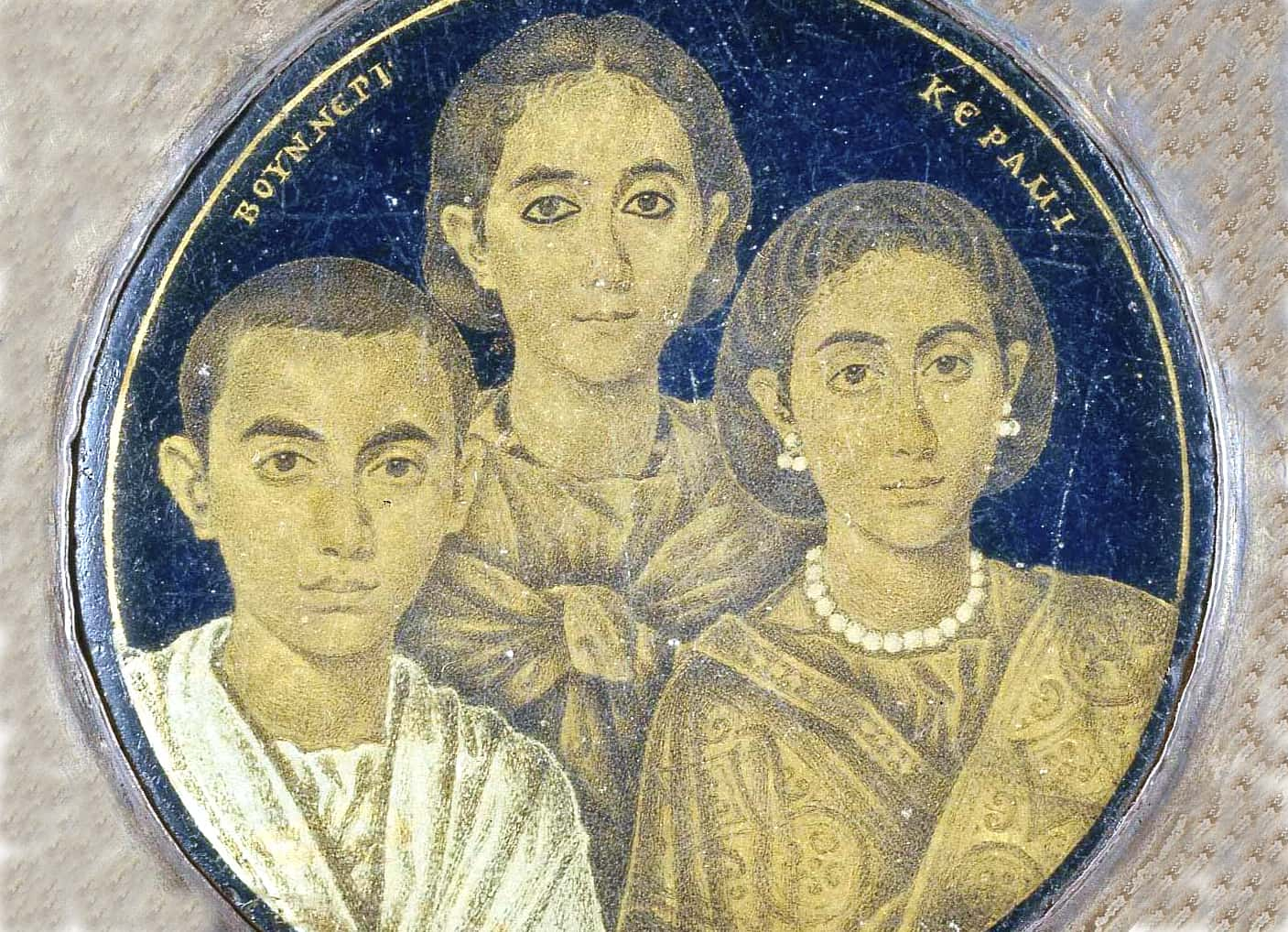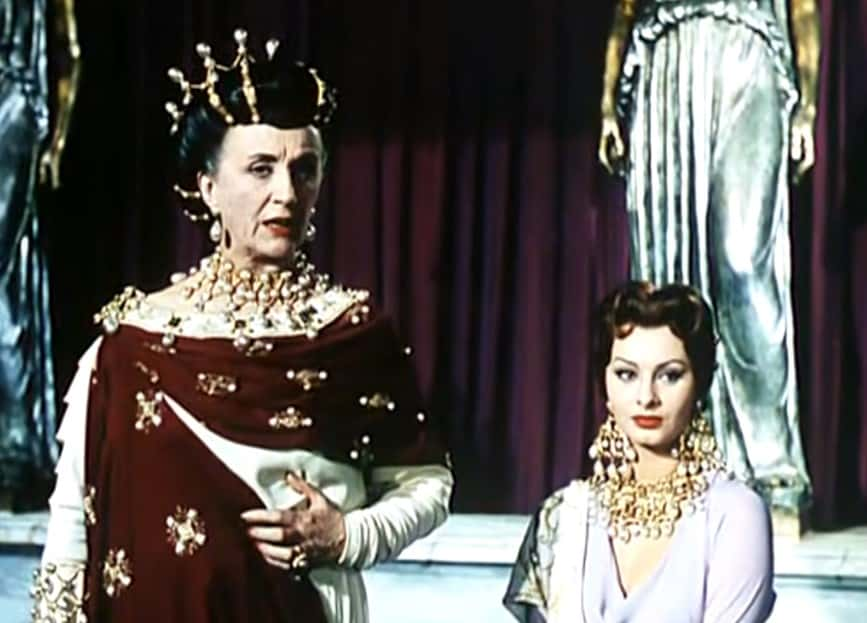Captive. Empress. Consort. More people need to know about Galla Placidia, the woman who overcame incredible odds and ruled Rome for over a decade. But being queen isn't all red carpets and golden crowns. Galla Placidia endured brutal darkness on her twisted road to absolute power.
1. Born into Greatness
Placidia entered this world with a silver spoon firmly in her mouth. She was descended from Roman emperors not one just one, but both sides of her family. Her father was Theodosius I, who ruled from 379 until 395 AD. Her mother, also named Galla, was the daughter of Valentinian I.

2. Those Days Will Never Return
Placidia’s father, also known as Theodosius the Great, really lived up to his name. He was incredibly powerful and became the last man in Roman history to rule both the Eastern and the Western halves of the Roman Empire. Following his rule, his sons (Placidia’s half-brothers Arcadius and Honorius) undid dear old dad's legacy and split the Roman Empire in half again. After that, it never reunited.
3. How Many Candles Does the Cake Need?
Not even top historians are sure of Placidia's exact birthday. Based on the sources, researchers believe it was in either 388, 389, 392, or 393 AD. There's a spicy reason for why we can narrow it down to these these dates: these two-year intervals are when Placidia’s parents were together in the same place (wink).
4. Does That Count?
But spice isn't the only thing hiding behind Galla's mysterious birthday. The date contains a dark tragedy too. In 390 AD, Bishop Ambrose of Milan wrote a letter declaring that the infant son of Theodosius, named Gratianus, had met his end while still in infancy. There's nothing like a lost heir to encourage the Emperor to get down to business and procreate some more.
5. Orphan
Placidia's first years were filled with tragedy. She lost both her mother (Galla) and her father (Theodosius) within the space of only two years. Galla was said to have perished due to complications during childbirth, and Theodosius perished from the effects of edema while he was in Milan. As we said, we’re not sure how old Placidia was at the time of her parents’ deaths, but regardless of which year, it was far too young an age to have to bury both of your parents.
6. A bit of Context Required
During Placidia’s life, the once-mighty Roman Empire was showing serious signs of decline. Even discounting the split of the Empire's Western and Eastern halves, the Romans no longer had the manpower required to maintain their borders. Meanwhile, changing times displaced many people from their homelands and they sought a new life in the weakening empire.
One of these figures was the sinister Alaric, a king of the Visigoths. Remember that name--he'll be back.
7. Official Guardian
Most of Placidia’s developing years were spent in the home of her cousin, Serena, who was married to Stilicho, "the last of the Roman generals". He was a highly accomplished army commander who, for a time, was the most powerful figure in the Western Roman Empire. In other words, Placidia had friends in very high places.
8. For the Sake of Antiquity
One of Placidia’s most enduring traits has been her love for artistic buildings and architecture. When she lived in Ravenna, she was responsible for the construction of several stunning churches across the city. Adorned with artwork of the time period, these churches are now invaluable to historians.
9. Independent Women, Throw Your Hands Up At Me
In the early 390s AD, when Placidia was still very young, her father made sure that she'd be financially independent before she even came of age. She had the right to form her own household and gain the title "nobilissima puella" (which means "most noble girl"). It's pretty ironic that Placidia’s status as an independent lady was thanks to her dad, but hey, that was the best deal a woman could achieve in Ancient Roman society.

History's most fascinating stories and darkest secrets, delivered to your inbox daily.
10. Benefactor Brought Down
Unfortunately for Placidia (and the rest of Rome, really), Stilicho came to a brutal end. His enemies eventually brought him down with a brutal coup d’état. After a series of military defeats, Stilicho's popularity and reputation plummeted. Then his enemies spread rumors that Stilicho, who was half-barbarian himself, was hoping to install his own son on the throne.
Revolts caused Stilicho to retire from public life, but even that wasn't enough for his enemies. They apprehended and executed him in 408 AD. And with that, another parental figure was out of little Galla's life.
11. Our Muse
Placidia has been sporadically referenced in poems over the years. The most famous poets who have name-dropped Placidia in their work are Ezra Pound, Alexander Blok, and Louis Zukofsky.
12. Too Young for Such Tragedy Either Way
Placidia's father summoned her to court in 394 AD, but she only got to enjoy life with her dad for a brief time. By the next year, she was present at his deathbed. At the time, Galla might have been as old as six or as young as two when she bore witness to her father's heartbreaking demise.
13. Taking Advantage of Another Demise
As if Placidia hadn’t already lost enough relatives during her childhood, her older half-brother Arcadius passed on in 408 AD. This meant that his own son, Theodosius II, inherited the throne of the Eastern Roman Empire at the age of seven. Placidia’s guardian at the time, Stilicho, attempted to manage the East on top of his responsibilities in the West, which further contributed to the rumors that his ambition was turning into power-hungry corruption.
Whether that’s really what he had in mind, we’ll never know.
14. "This is Fine!"
Although Galla Placidia avoided being caught up in Stilicho's downfall, she was one of the lucky ones—others suffered a much darker fate. Following the demise of Stilicho, his enemies carried out a series of purges against his followers. Stilicho had employed many people of "barbarian" background to defend Roman territory. These "foederati," as they were called, had their loyalty repaid by Romans murdering their wives and children.
As a result, the foederati decided that they were better off fighting against Rome rather than for it. This crippled Rome’s army even further, with many foederati defecting to the enemy.
15. Enemies at the Gate
From 408 to 410, Rome endured one of its darkest times. For the first time in centuries, an army laid siege to the city of Rome. The brave man at the head of this force was someone we've met before: King Alaric of the Visigoths. Unfortunately for Placidia, she was there to see the brutality unfold.
16. Captive
The brutal King Alaric famously became the man who sacked the city of Rome in 410, causing the "Fall of the Western Roman Empire" (though it would hobble on for another seventy years). But fewer people know that before Alaric sacked Rome, his forces took little Placidia captive. At the time, she was between 17 and 22 years old.
17. Abrupt Change of Plans
Shortly after his great victory at Rome, a shocking event made jaws drop all over Italy. King Alaric I lost his life under mysterious circumstances. Command over the powerful Visigoth army went to his brother-in-law, Athaulf, who also became responsible for holding Placidia captive. Despite the regime change, the Visigoth army wasn't about to set her free.
18. My Head is Spinning
Following the sack of Rome and the death of Alaric in 410, the Visigoths moved out of Italy to live in Gaul, taking Placidia with them. It was at this time that pretenders to the Western Roman Empire rose up in Gaul, and the Visigoth leader Athaulf decided that he liked the pretenders less than Emperor Honorius. In a bizarre reversal, the Romans teamed up with their former enemies the Visigoths to take down Gaul.
In an instant, everything changed. Placidia went from being a captive to an honored guest. We can only imagine her reaction when someone caught her up to speed on what was going on.
19. Missing School Credentials
No one knows what sort of education Placidia received while she was a young girl in the household of Stilicho. Traditionally, Roman women were taught the crafts of weaving and embroidery, but it’s also possible that Placidia received a formal education, since she was so high born.
20. For a Brighter Future
In a bizarre turn of events, Placidia went from captive...to wife. After the Visigoths under Athaulf had helped the Romans defeat their Gallic enemies, Athaulf and Honorius reached a deal for a more permanent alliance. Thus, in 414 AD, Placidia married Athaulf, with the hopes that they would produce a new dynasty of Roman and Gothic backgrounds.
21. Wife or Captive?
We should clarify that there is some dispute over when exactly Placidia married Athaulf. Most say it took place in 414, but the historian Jordanes claims that they had been married since 411. If the latter is true, it would certainly explain why Athaulf made such an about-face and supported the Romans after working so hard to destroy them.
22. In the Name of the Father…
Despite her, um, odd love life, Placidia was a very pious woman who was utterly devoted to the Christian faith. During her lifetime, she arranged for several churches to be restored or expanded. These include the Church of the Holy Sepulchre in Jerusalem, as well as Rome’s Basilica of St. Paul Outside the Walls (in case you’re confusing it with the Basilica of St. Paul that stands within the city of Rome).
23. Well, That Could Have Gone Better
Sadly, for the Visigoths and for the Romans, the marriage between Galla Placidia and Athaulf came to a heartbreaking end. Their son, named Theodosius after Placidia’s father, didn't survive infancy, while Athaulf was slain a year after the wedding. According to the histories, Athaulf was bathing himself when a man who was loyal to Gaul avenged his former master’s defeat by taking Athaulf's life.
24. Mystery Mausoleum
If you travel to Ravenna, Italy, you'll find the Mausoleum of Galla Placidia, an ancient Roman structure that is one of seven Ravenna buildings that can be found on UNESCO’s World Heritage List. While there is a lot of room for debate on the matter, historians believe that Placidia ordered the building's construction to serve as a mausoleum for herself and her family, though there is no hard evidence to verify this theory.
25. Round Two
In 417, not long after Athaulf's death, Honorius arranged for Placidia to marry Constantius, who was serving as Honorius’ magister militum (which translates to "Master of Soldiers"). According to the histories, Placidia was deeply opposed to the union. Her brother actually had to force her into the marriage.
26. Getting Busy
Despite the disturbing beginnings of their marriage, Placidia and Constantius got to work on their primary objective: Making babies. Their daughter, Justa Grata Honoria, was born in either 417 or 418, while their son, who became Valentinian III, was born in July 419.
27. All Men Reach and Fall
In 421 AD, Placidia got a major promotion. The current Emperor Honorius was still childless, so he decided to plan ahead and appoint Placidia and Constantius as his co-rulers. Placidia became Empress of the Western Roman Empire while Constantius II (as he was crowned) suffered a less prestigious fate. He me his end within a year of his being emperor.
28. Long May She Reign
With the passing of Constantius, Placidia became regent of the Western Roman Empire in the name of her underage son Valentinian III. She held this position for around twelve years, from 425 until 437, which we’ll point out is actually longer than most Roman Emperors ever held power!
29. Bygones are Bygones
After the passing of her husband, Constantius II, Galla Placidia and her children left Ravenna for the Eastern Roman Empire (more on that later). They went to the court of Theodosius II, who ruled in the East. He treated Placidia with courtesy, which is pretty ironic given that just before his end, Constantius II had been preparing to invade the Eastern Empire!
However, given that Placidia had married Constantius against her will, we can imagine that Theodosius didn't hold it against her.
30. Wait, What?
In his autobiography, psychology legend Carl Jung claimed that he visited Placidia’s tomb in Ravenna. The experience was deeply spiritual for Jung, and he said he felt a strong connection to Placidia’s "fate and her whole being". Of course, we have to take it with a grain of salt, because Jung also claimed to have visited "four great mosaic frescoes of incredible beauty" in the Neonian Baptistery...which didn’t actually exist!
31. Regime Change
In 423, Honorius passed on, leaving Placidia and her son, Valentinian, as the obvious successors to his throne. However, they were away in the Eastern Roman Empire at the time, so power went to a usurper named Joannes, with the seasoned general Flavius Aetius supporting him. With the Eastern Roman Empire's backing, however, Placidia defeated Joannes—who met a horrific demise for his treason.
Joannes first got his right hand cut off, was paraded in shame on a donkey, and then finally beheaded. Yikes...
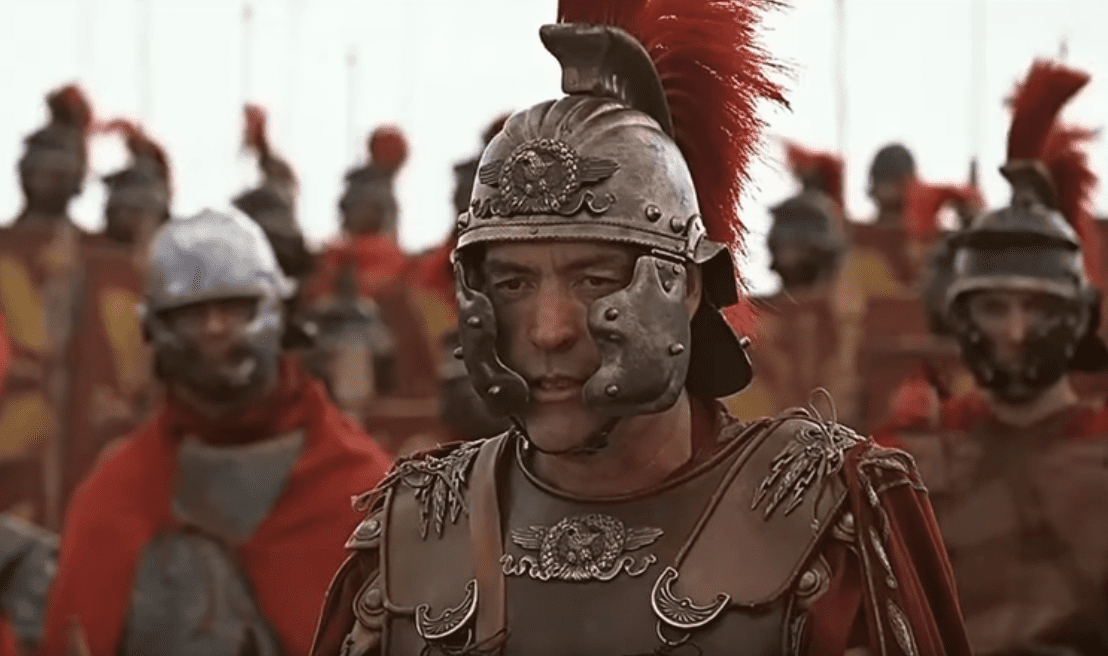 Attila (2001), Alphaville Films
Attila (2001), Alphaville Films
32. Rivals in Power
Although Joannes was executed, his comrade Flavius Aetius was still very much alive. Aetius’ presence plagued Placidia’s time as regent, as he was a skilled military leader with great influence. Placidia moved cautiously around him, however, as the Western Roman Empire was very fragile and needed all the help it could get. Aetius even tried to turn Placidia against her allies in the Roman court, but she easily uncovered this plot, as she preferred to talk things over rather than incite armed conflict.
 Attila (2001), Alphaville Films
Attila (2001), Alphaville Films
33. Apt Alias
There is another name that history associates with Placidia. Coins originally from Constantinople dating back to 425 AD are inscribed with the name "Aelia Placidia". As there is no mention of the name "Aelia" in any Western Roman sources regarding Placidia, some historians have suggested that she used this name to ingratiate her to her subjects in the Eastern Roman Empire. After all, her father’s first wife had also been named Aelia.
34. Familial Rebellion
Even after she herself had been forced into a loveless marriage, Galla Placidia turned around and tried to push a similar situation upon her own daughter, Justa Grata Honoria. Honoria was having none of that, however, and she wrote to none other than Attila the Hun for assistance! This was a major betrayal. At the time of Honoria's letter, Attila was busy trying to overrun the Western Roman Empire...which was being ruled by her brother, Valentinian III. Awkward...
35. Silence is Golden
But Honoria had no idea what she was bringing down upon Rome with her words. While she didn’t directly say it, Attila chose to treat her letter of help as a marriage proposal. He insisted that he wanted half the Western Roman Empire as dowry. As you can imagine, Valentinian didn’t agree to that idea.
 Attila (2001), Alphaville Films
Attila (2001), Alphaville Films
36. Spare My Daughter!
When Placidia’s son, Valentinian III, found out that Honoria was communicating with Attila, it was only through Placidia’s persuasion that he didn't have his sister executed for high treason. Instead, he pushed Honoria into yet another loveless marriage, and Attila went on a rampage through the Empire before they finally stopped him at the Battle of Chalons.
 Attila (2001), Alphaville Films
Attila (2001), Alphaville Films
37. The Empress is Dead
Placidia didn’t live long enough to see Attila the Hun defeated. She passed on in 450 AD, just a year before the Battle of Chalons.
38. Like the Worst Parts of Gladiator and Game of Thrones Combined…
It’s still debated just why Placidia was kicked out of the Western Roman Empire. Some historians argue that she intimidated the Empire's power structure as a formidable woman with legitimate titles, leading her rivals to spread rumors that would discredit Placidia and drive her out of Ravenna. But others believe the reason was much more twisted...
39. Flowers in the Ancient Roman Attic
One historian claimed that the Wester Roman Empire public found Placidia repulsive because her brother Honorius would caress her in a way that was, uh, seen as very indecent. Other historians claim a slightly better version of this story: that Placadia decided to leave Ravenna all by herself, thank you very much. She was disgusting by her brother’s incestuous passes at her and decided to skip town. Fair enough!
40. When in Rome
Remember how everyone Galla Placidia ever loved died? Well, there's more where that misery came from!According to one historical source, Placidia was betrothed from a very young age to marry Eucherius, the son of Stilicho and Serena. However, Eucherius was caught up in the same tempest of events that brought down his father, and though he fled for his life, he was eventually caught and executed on Honorius' orders.
So just to recap, Placidia’s fiancé, who was also her second cousin, was slain on the word of her older half-brother. On top of that, Stilicho’s daughter Maria was Honorius's wife, meaning that he was also putting his in-laws to the sword. Is there a therapist qualified to handle that hot mess?
41. All’s Well That Ends Well?
Following the loss of her first husband, Athaulf, Galla Placidia had to deal with his successor, the violent Sigeric. After being subjected to "cruel and wanton insult," Placidia was forced to walk twelve miles on foot. However, this brutal treatment of Placidia ironically resulted in the Visigoths losing any respect for Sigeric and promptly taking his life. They then allowed Placidia to return to her brother, Emperor Honorius.
42. Cold-Blooded
During the siege of Rome in 410 AD, many suspected that Placidia’s cousin, Serena, was conspiring with the Visigoths. We have no idea if this was true or not, but either way, Placidia worked with the Roman Senate to find Serena guilty and execute her. Keep in mind, this was the same cousin who took Placidia into her home and raised her, and who also lost her husband and son to execution on the orders of Placidia’s half-brother.






